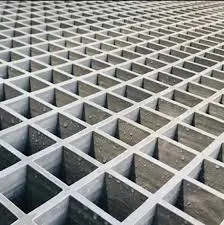
-
 Afrikaans
Afrikaans -
 Albanian
Albanian -
 Amharic
Amharic -
 Arabic
Arabic -
 Armenian
Armenian -
 Azerbaijani
Azerbaijani -
 Basque
Basque -
 Belarusian
Belarusian -
 Bengali
Bengali -
 Bosnian
Bosnian -
 Bulgarian
Bulgarian -
 Catalan
Catalan -
 Cebuano
Cebuano -
 China
China -
 China (Taiwan)
China (Taiwan) -
 Corsican
Corsican -
 Croatian
Croatian -
 Czech
Czech -
 Danish
Danish -
 Dutch
Dutch -
 English
English -
 Esperanto
Esperanto -
 Estonian
Estonian -
 Finnish
Finnish -
 French
French -
 Frisian
Frisian -
 Galician
Galician -
 Georgian
Georgian -
 German
German -
 Greek
Greek -
 Gujarati
Gujarati -
 Haitian Creole
Haitian Creole -
 hausa
hausa -
 hawaiian
hawaiian -
 Hebrew
Hebrew -
 Hindi
Hindi -
 Miao
Miao -
 Hungarian
Hungarian -
 Icelandic
Icelandic -
 igbo
igbo -
 Indonesian
Indonesian -
 irish
irish -
 Italian
Italian -
 Japanese
Japanese -
 Javanese
Javanese -
 Kannada
Kannada -
 kazakh
kazakh -
 Khmer
Khmer -
 Rwandese
Rwandese -
 Korean
Korean -
 Kurdish
Kurdish -
 Kyrgyz
Kyrgyz -
 Lao
Lao -
 Latin
Latin -
 Latvian
Latvian -
 Lithuanian
Lithuanian -
 Luxembourgish
Luxembourgish -
 Macedonian
Macedonian -
 Malgashi
Malgashi -
 Malay
Malay -
 Malayalam
Malayalam -
 Maltese
Maltese -
 Maori
Maori -
 Marathi
Marathi -
 Mongolian
Mongolian -
 Myanmar
Myanmar -
 Nepali
Nepali -
 Norwegian
Norwegian -
 Norwegian
Norwegian -
 Occitan
Occitan -
 Pashto
Pashto -
 Persian
Persian -
 Polish
Polish -
 Portuguese
Portuguese -
 Punjabi
Punjabi -
 Romanian
Romanian -
 Russian
Russian -
 Samoan
Samoan -
 Scottish Gaelic
Scottish Gaelic -
 Serbian
Serbian -
 Sesotho
Sesotho -
 Shona
Shona -
 Sindhi
Sindhi -
 Sinhala
Sinhala -
 Slovak
Slovak -
 Slovenian
Slovenian -
 Somali
Somali -
 Spanish
Spanish -
 Sundanese
Sundanese -
 Swahili
Swahili -
 Swedish
Swedish -
 Tagalog
Tagalog -
 Tajik
Tajik -
 Tamil
Tamil -
 Tatar
Tatar -
 Telugu
Telugu -
 Thai
Thai -
 Turkish
Turkish -
 Turkmen
Turkmen -
 Ukrainian
Ukrainian -
 Urdu
Urdu -
 Uighur
Uighur -
 Uzbek
Uzbek -
 Vietnamese
Vietnamese -
 Welsh
Welsh -
 Bantu
Bantu -
 Yiddish
Yiddish -
 Yoruba
Yoruba -
 Zulu
Zulu
Exploring the Advantages and Features of Food Grade Fiberglass Equipment
A Closer Look at Fiberglass Food Grade Equipment Features and Benefits
In the realm of food safety and processing, the materials used in equipment play a crucial role. One such material that has gained popularity in recent years is fiberglass. This article explores the features and benefits of fiberglass food grade equipment, highlighting why it has become a preferred choice in various food-related industries.
Understanding Fiberglass
Fiberglass is a composite material made from a matrix of glass fibers and resin, which grants it unique properties. It is known for its lightweight nature, strength, and resistance to various environmental factors. In food processing and handling, these characteristics are invaluable, ensuring both efficiency and safety.
Key Features of Fiberglass Food Grade Equipment
1. Durability Fiberglass is resistant to corrosion, chemicals, and extreme temperatures, making it suitable for environments that involve rigorous cleaning and sanitation processes. This durability ensures that the equipment maintains its structural integrity over time, reducing the likelihood of damage or wear.
2. Safety Compliance Food grade fiberglass equipment meets stringent safety standards, ensuring that it doesn’t leach harmful substances into food products. The material is often certified by health and safety organizations, giving businesses peace of mind regarding food safety.
3. Ease of Cleaning The non-porous surface of fiberglass makes it easy to clean and sanitize, an essential factor in the food industry where hygiene is paramount. Unlike some traditional materials, fiberglass resists staining and does not harbor bacteria, minimizing the risk of contamination.
fiberglass food grade equipment a closer look at its features and ...

4. Lightweight Design The lightweight nature of fiberglass makes it easier to handle and maneuver during installation or when cleaning. This feature can lead to improved operational efficiency, as equipment can be moved without the need for heavy lifting or specialized equipment.
5. Versatility Fiberglass can be molded into various shapes and sizes, allowing manufacturers to create customized solutions that meet specific industry requirements. This versatility is beneficial for businesses looking to optimize their processes and workflows.
Benefits of Using Fiberglass Food Grade Equipment
1. Cost-Effectiveness Although the initial investment in fiberglass equipment may be higher than some alternatives, the long-term savings associated with its durability and low maintenance costs make it a cost-effective choice. Businesses can expect fewer replacements and repairs, contributing to improved bottom lines.
2. Sustainability Many fiberglass products are designed with sustainability in mind. They can be reused multiple times and are often recyclable. By choosing fiberglass, companies can lower their environmental impact, aligning with the growing demand for sustainable practices in food production.
3. Enhanced Productivity The reliability and efficiency of fiberglass equipment contribute to smoother operations. With less downtime due to repairs or cleaning, businesses can focus on productivity and delivering high-quality food products.
In conclusion, fiberglass food grade equipment presents a compelling option for businesses in the food industry. Its durability, safety compliance, ease of cleaning, and versatility make it an attractive solution for enhancing operational efficiency. As food safety standards continue to evolve, fiberglass will likely play a critical role in helping businesses meet these demands while prioritizing sustainability and cost-effectiveness. Embracing this innovative material might just be the key to future success in food processing.









